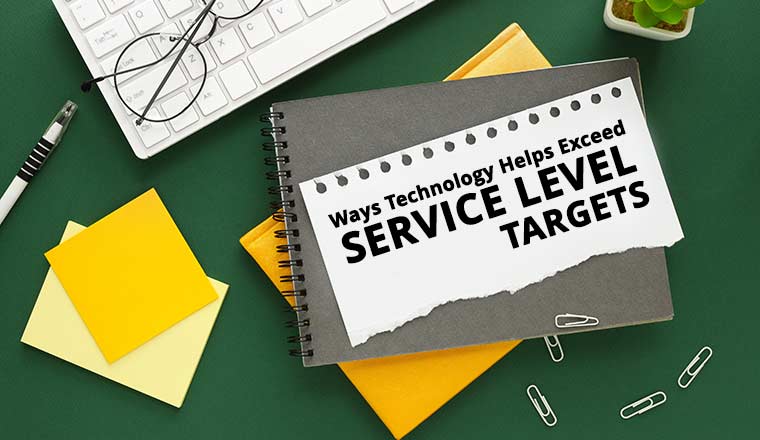15th January 2024

For most, service level targets set a baseline standard – marking the difference between success and failure. But what can you do to exceed these targets and take your service experience to the next level?
To find out, we asked our panel of experts for their best advice on how to use technology to surpass service level targets.

Having an AI-powered workforce management (WFM) solution can help estimate staffing needs over time, including during peak times, making sure that there is enough staff on hand on busy days.
This extends during times of crisis. When it’s an all-hands-on deck situation, a modern WFM system can push out alerts to staff to pick up extra shifts.
Contributed by: Andrea Matsuda, Manager, Product Marketing, NICE

The number one thing you’ve got to do properly if you’re going to meet or exceed your service level targets is workforce management (WFM) – having the right number of people in the right places at the right times, doing the right things.
In practice this means:
Get all those steps right and your chances of consistently hitting service level targets go through the roof.
Contributed by: Chris Dealy, WFM Evangelist, injixo

Workflow automation tools and self-service improve response time, reduce manual errors, and ensure that enquiries are directed to the right department or agent swiftly.
Create user-friendly self-service portals to enable customers to access information, troubleshoot problems independently, and track requests. This can reduce support enquiries and enable service teams to address higher-level issues.
Deploying these technologies strategically can not only meet but surpass service level targets, offering customers a remarkable and efficient experience.
Contributed by: Thomas John, VP of Partner Sales International, Five9

Shift patterns and customer demand patterns are unfortunately not the same. A contact centre needs to make sure that agents are in the right place at the right time to meet service levels, but without overstaffing during quieter periods.
Using technology that takes actual demand and actual agent supply and uses algorithms to continually reforecast, rescheduling offline activities into periods of available time – ensures agents are on customer contact when needed to meet service levels.
It also predicts when service levels are under threat and acts – moving multiskilled agents between queues, rescheduling other moveable activities and offering overtime if needed.
Contributed by: Simon Beck, Head of Sales, QStory

The question of ‘am I talking to a machine or human?’ really doesn’t seem to matter any more.
Ultimately, we want to speak to the machine if it’s going to be able to provide answers quickly and efficiently. The key to success, like with any sort of major software adoption, is ensuring that contact centres start at the right level.
Rather than leap ahead, they should take a step back and implement appropriate and relevant customer service use cases. This will give the AI technology a platform to learn from, and from there businesses can start developing it.
It’s important that we don’t try and build a skyscraper straight out, but instead get the foundations right to give it a suitable structure. From that structure, we can adapt as the technology improves, changes and develops over the course of the coming years.
Contributed by: Jamie Snaddon, Managing Director, EMEA, 8×8

Deploying digital quality management (QM) is an important step towards surpassing service level targets.
The latest tech captures the full agent and customer experience, making it easy to monitor, evaluate and improve quality processes across the entire contact centre environment.
The best tools are analytics-enabled, omnichannel and encompass a broad range of capabilities such as call recording, desktop monitoring, speech analytics, sentiment analysis and post-call surveys all rolled into one.
For a robust QM framework, combine QM with automated performance management – it is the final piece of the QM jigsaw.
Monitoring real-time agent performance against quality objectives is a proven formula to help agents reach their full potential and exceed customer expectations.
Contributed by: Graeme Meikle, WFM Consultant/Project Manager, Calabrio
A modern WFM solution also includes self-scheduling, enabling employees to request time off while ensuring that staffing needs are met.
Having a system like this in place means that there is always someone available to pick up the next call or digital interaction, speeding up response times, eliminating dreaded holds, and boosting customer satisfaction.
Contributed by: Andrea Matsuda, Manager, Product Marketing, NICE
If you want more information on contact centre service levels, read these articles:
For more great insights and advice from our panel of experts, read these articles next:
Reviewed by: Xander Freeman